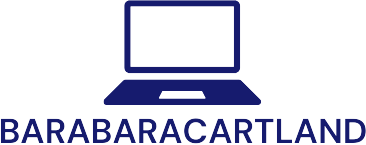Table of Contents
ToggleNavigating the world of language can feel like trying to decode an alien message, especially for those with language-based learning disabilities. Imagine struggling to read a simple menu while your friends devour their meals. It’s not just frustrating; it can be downright isolating. Yet, understanding these challenges opens the door to empathy and support.
Understanding Language Based Learning Disability
Language-based learning disabilities create significant obstacles in academic and social settings. Individuals struggle with tasks that require reading, writing, and oral communication. These challenges often lead to feelings of frustration and isolation. For example, a child may find it difficult to follow a class lecture while peers easily grasp the material.
Symptoms of language-based learning disabilities can vary. Some individuals might experience trouble with phonemic awareness, which is the ability to hear and manipulate sounds in words. Others may face difficulties in decoding words or understanding verbal instructions. Each person’s experience is unique, often making identification complex.
Diagnosis frequently involves a comprehensive evaluation. Professionals assess reading, writing, and language skills through standard tests and observational methods. Early identification plays a crucial role in providing appropriate interventions and support. Tailored instruction can significantly enhance academic achievement and self-esteem.
Interventions focus on developing specific language skills. Techniques might include structured literacy programs, which emphasize phonics and vocabulary development. Utilizing assistive technology can also provide valuable support. Tools such as speech-to-text software can help alleviate some communication barriers.
Social implications of language-based learning disabilities are profound. Affected individuals may withdraw from social situations due to embarrassment or frustration. Building a supportive and understanding environment can facilitate participation and engagement. Schools and families must work collaboratively to ensure access to resources and emotional support.
Being informed about language-based learning disabilities encourages empathy. Acknowledging the struggles faced by individuals fosters acceptance and inclusivity. With proper understanding and support, those impacted can thrive academically and socially.
Symptoms and Signs

Symptoms of language-based learning disabilities can manifest in various ways, affecting daily communication and academic performance. These signs often differ among individuals, complicating early recognition.
Early Indicators
Children with language-based learning disabilities may struggle with speech and vocabulary development. Delayed speech milestones often stand out, indicating potential issues. Difficulty understanding directions or following conversations frequently occurs. Mispronunciation of common words can also serve as a key indicator. Observing these early signs allows for timely evaluations and interventions, which significantly impact long-term outcomes.
Common Challenges
Reading comprehension typically poses a significant challenge for individuals with language-based learning disabilities. Difficulty decoding words can hinder progress in school. Writing often requires greater effort, leading to messy or poorly structured assignments. Oral communication may feel intimidating, causing avoidance of participation in discussions. These challenges significantly affect academic performance and social interactions, further contributing to feelings of frustration and isolation.
Causes and Risk Factors
Language-based learning disabilities arise due to a combination of genetic and environmental factors. Understanding these elements helps in recognizing the complexities of such disabilities.
Genetic Influences
Genetic factors significantly contribute to language-based learning disabilities. Research indicates that these conditions often run in families, suggesting a hereditary component. Specific genes related to language processing and cognitive functions may increase susceptibility to these learning challenges. Furthermore, children with a family history of reading difficulties are at a higher risk of experiencing similar issues. Genetic predispositions can shape brain development, impacting language skills.
Environmental Factors
Environmental influences also play a crucial role. Exposure to language-rich environments enhances linguistic skills and cognitive development. Conversely, limited access to reading materials and varied experiences can hinder language acquisition. Socioeconomic conditions often affect educational resources and parental involvement, both of which are critical for fostering language abilities. Additionally, early interventions can mitigate risks associated with environmental factors, paving the way for improved outcomes.
Assessment and Diagnosis
Assessment of language-based learning disabilities requires a multifaceted approach. Evaluation tools play a crucial role in identifying the specific challenges an individual faces.
Evaluation Tools
Standardized tests help measure reading, writing, and comprehension skills. Such assessments can include measures like Woodcock-Johnson Tests and the Comprehensive Test of Phonological Processing. These tools provide a benchmark for evaluating performance against age-appropriate expectations. Additionally, observational assessments offer insight into an individual’s functional communication in real-world settings. Collaborating with educators can refine understanding of how learning disabilities affect academic progress and social interactions.
Professional Guidance
Professionals conduct assessments in various settings, ensuring a comprehensive evaluation process. Psychologists, speech-language pathologists, and special education experts often collaborate to gather insights from multiple sources. These professionals analyze assessment results alongside developmental history to arrive at an accurate diagnosis. Recommendations might include tailored interventions, such as speech therapy, specialized tutoring, or assistive technology. Engaging professionals enhances understanding and supports the individual’s journey, providing strategies to overcome their specific language-related challenges.
Interventions and Support Strategies
Individuals with language-based learning disabilities benefit from a variety of interventions and support strategies tailored to their unique needs. These strategies often focus on fostering skills across educational, home, and community settings.
Educational Approaches
Structured literacy programs prove effective in addressing reading and writing challenges. These programs incorporate explicit instruction in phonics, vocabulary, and comprehension. Teachers may use multi-sensory teaching methods, which engage auditory, visual, and kinesthetic channels to enhance learning. Collaborative learning environments promote peer support and social interaction, fostering confidence. Personalized education plans, developed in collaboration with educators and specialists, cater to each student’s specific challenges. Assistive technology, such as text-to-speech software and speech recognition tools, can also aid in improving language skills.
Home and Community Support
Family involvement plays a crucial role in supporting individuals with language-based learning disabilities. Encouraging reading at home creates a language-rich environment, enhancing comprehension skills. Parents can implement daily routines that include language activities, such as storytelling or vocabulary games. Community resources, like local libraries and after-school programs, provide additional opportunities for language development. Connecting with support groups or online forums helps families share strategies and experiences, thereby fostering a sense of community. Collaborative efforts among parents, educators, and community organizations strengthen support networks for individuals with these learning challenges.
Understanding language-based learning disabilities is vital for fostering a supportive environment. By recognizing the unique challenges individuals face, society can cultivate empathy and inclusivity. Early identification and tailored interventions can significantly improve academic and social outcomes.
Collaboration among educators, families, and communities is essential in creating a language-rich environment that nurtures growth. With the right support and resources, individuals with language-based learning disabilities can thrive and reach their full potential. Embracing these differences not only benefits those affected but enriches the entire community.




